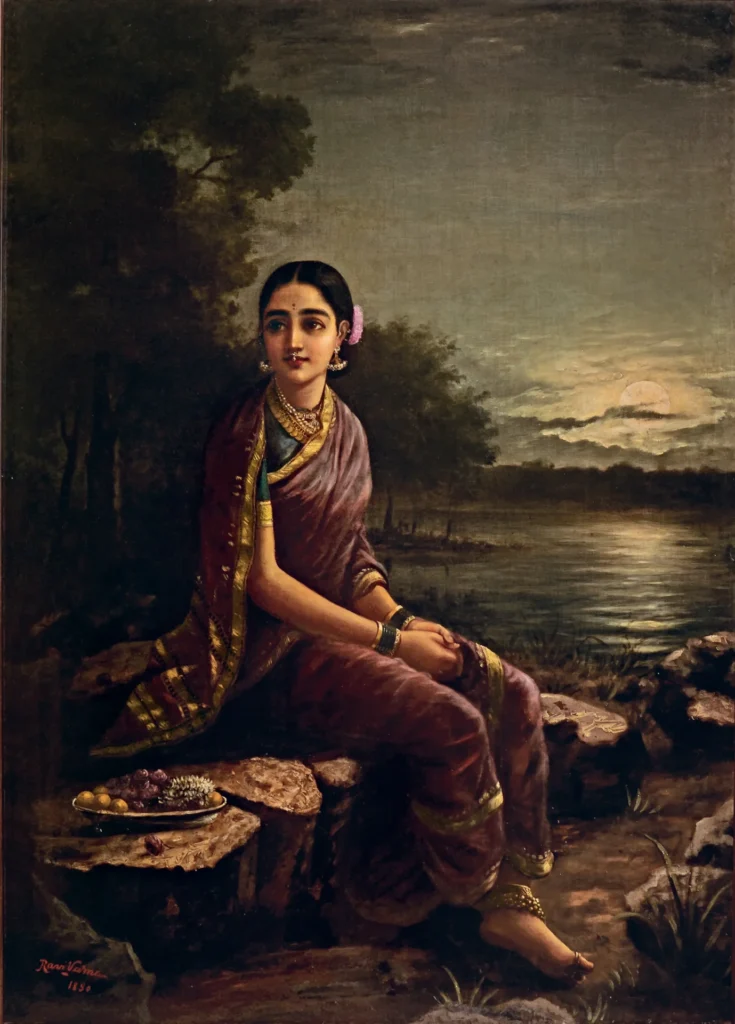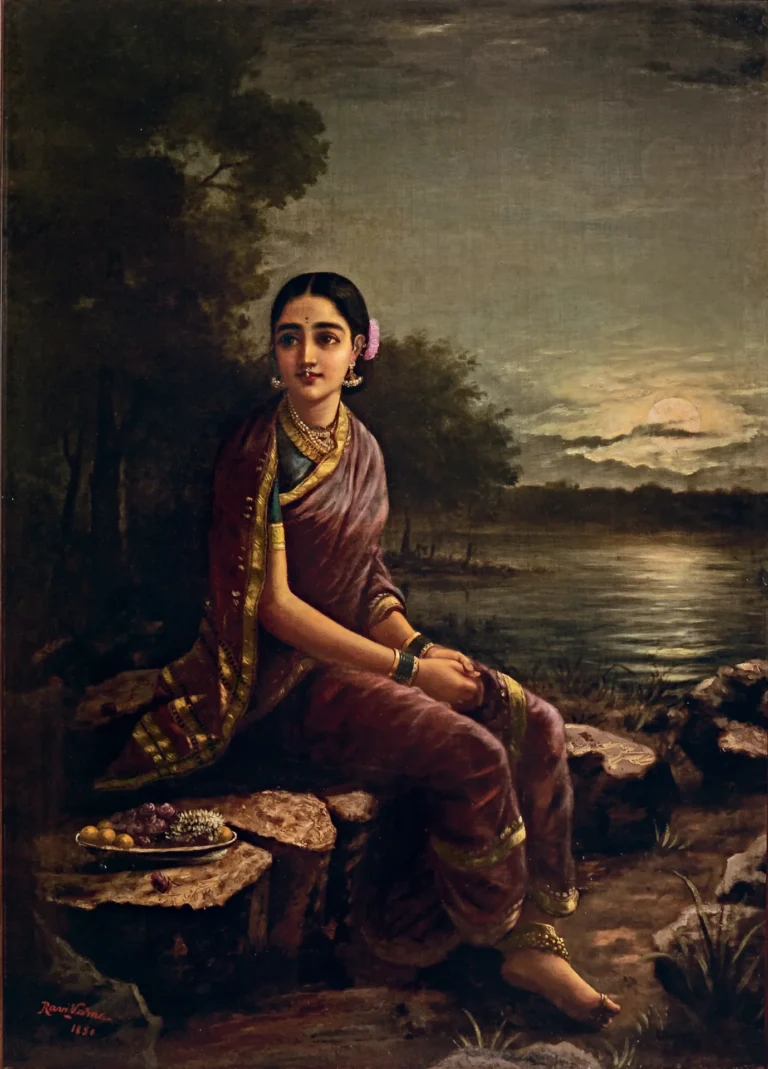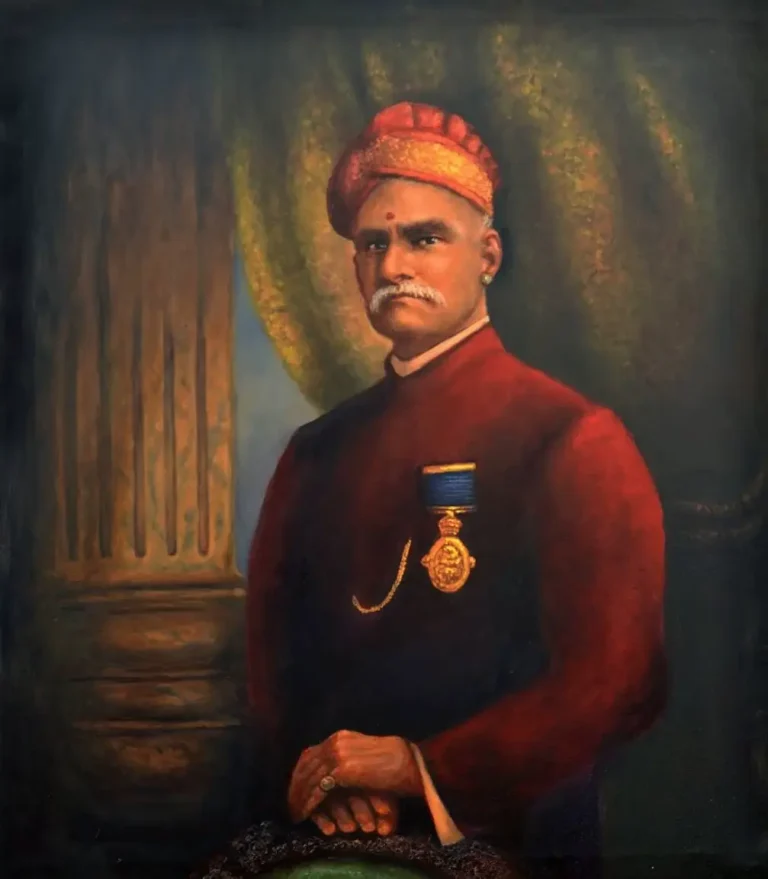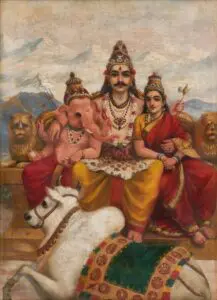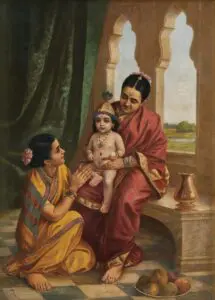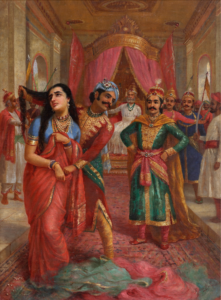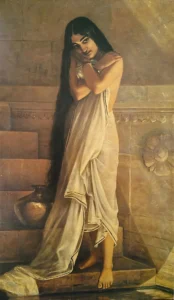Radha In Moonlight
Radha in the Moonlight portrays the ethereal Radha, the beloved of Lord Krishna, in a moment of tranquil anticipation. Seated on rocks beside shimmering waters, the painting reflects not only Radha's profound virtues, epitomizing the uttama nayika archetype, but also captures the tender emotional landscape that defines human-divine relationships. Varma's masterful brushwork merges Indian iconography with European techniques, resulting in a striking composition rich in beauty and depth.
Year 1890
About the Artwork
Raja Ravi Varma's painting Radha in the Moonlight, created in 1890, is a celebrated work that exemplifies his mastery in blending traditional Indian themes with European artistic techniques. This artwork depicts Radha, the beloved consort of Lord Krishna, portrayed as an uttama nayika—an ideal woman embodying virtue and grace.
Description of the Painting
In this piece, Radha is depicted sitting gracefully on rocks by a shimmering water body, symbolizing both beauty and anticipation. The soft glow of the moonlight enhances her delicate features, reflecting her intelligence and sensitivity. She is surrounded by a pooja thali, indicating her readiness for worship before engaging in the romantic encounter with Krishna, which emphasizes the intertwining of divine and human love.Artistic Significance
Raja Ravi Varma is renowned for his ability to convey deep emotions through his subjects, and Radha in the Moonlight is no exception. The painting captures Radha's longing and devotion, portraying her as a figure of beauty and grace, waiting for her beloved amidst a serene natural setting. This artwork not only highlights Varma's technical skill but also his understanding of Indian mythology and its representation through art.Did You Know
Radha’s portrayal as an ‘uttama nayika’ in Indian literature signifies her ideal qualities of love, devotion, and inner beauty, making her a powerful symbol in Hindu mythology.
In November 2016, ‘Radha in the Moonlight’ fetched Rs 23 crore at auction, setting a new record for Indian paintings and reflecting the growing interest in Indian art on the global stage.
Raja Ravi Varma’s works are celebrated for merging traditional Indian themes with Western artistic techniques, making him a pivotal figure in bridging the gap between Eastern and Western art.




